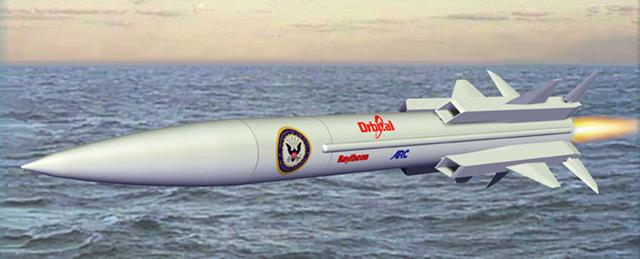 GQM 163A Coyote. These were not the first engage-on-remote tests, but they were the first using a cue from an 'assist' ship (USS Sampson). (picture: Orbital Science) |
|||
About
the Standard Missile-6 SM-6 delivers a proven over-the-horizon air defense capability by leveraging the time-tested advantages of the Standard Missile's airframe and propulsion. The SM-6 uses both active and semiactive guidance modes and advanced fuzing techniques. It incorporates the advanced signal processing and guidance control capabilities from Raytheon's Advanced Medium-Range Air-to-Air Missile. |
|||
Raytheon SM-6s Missiles intercept targets in 'engage on remote' tests
- Posted On











